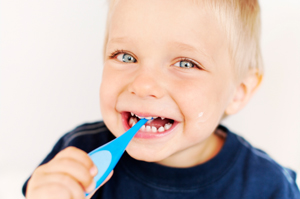Water and fluoride
What’s all the fuss about fluoride?
Now I must confess I stand undecided myself on the whole issue, we filter our water, but then we also – I believe – eat a lot of foods that are likely to contain fluoride and we use fluoride toothpaste (which I insist must be well rinsed afterwards).
What does the research say?
The information tends to suggest that at the end of the day it all comes back to personal choice based on an informed view of your own situation. The WHO guidelines (who most other agencies generally defer to), comment repeatedly that the issue of fluoridation is a local issue influenced by the individual and their environment within their community. In fact they go so far as to suggest that to get it right would require looking at the actual body weight, diet, temperature and geographical factors of each person.
Pros and cons of fluoride
- Too little and dental cavities increase.
- Too much and tooth mottling and other bone related diseases go on the rise.
So you can see how this debate oscillates from one side to the other and why no real consensus has been reached, this simply reflects the research.
It is worth just saying at this point that fluoride does occur naturally in most water and in many foods albeit different levels from one area to another. We know with reasonable certainty that fluoride at low levels (between 0.7 and 1.2 parts fluoride per million parts of water) does significantly reduce tooth cavities.
So what can you do to ensure your children get enough flouride?
Many dentists are well advised on the issue and your local dentist is probably best able to tell you about local levels of fluoride and if fluoride is required by you or your little one. You could try working out requirements yourself based on the water authorities’ estimates of fluoride in the water and assessing your diet and so on, but it really isn’t simple and I doubt it would be fun. So keep in mind that:
- Infants under 6 months don’t require fluoride.
- Water for infants is best after six months and when starting solids (given in a sipper cup). Some infants may require water due to issues such as constipation. Before offering anything other than breastmilk or formula to an infant not yet on solids check with your GP or nurse.
- Reverse osmosis is indeed one of the best methods to remove fluoride and other compounds from drinking water.
Some other tips
- Offer both tap water (boiled if needed) and bottled water if you believe the fluoride is excessive in your area.
- Include natural sources of fluoride such as fish (with bones i.e. tinned), cheddar cheese, milk, garlic, fish, cabbage and kale, oats, rice and even corn has fluoride (keep in mind the levels are difficult to assess).
- Encourage your water authority to provide water fluoride data.
- Ensure regular visits to your dentist from early on.
What’s the situation in Kenya?
Fluoride levels in Kenya are often excessive due to natural deposits being found in the water sources. It can result in dental fluorosis which is evidenced by varying degrees of tooth discoloration. For children who's teeth are developing the effects can be even worse. Therefore families are encouraged to buy deflouridation devices for home use to reduce it to recommended levels.
Read more:


